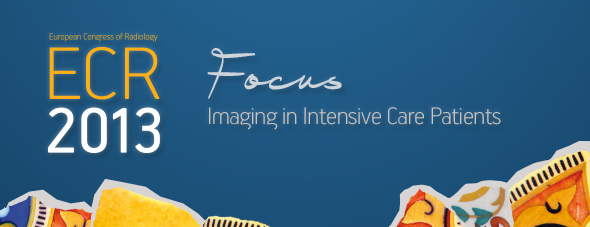ECR 2013 Focus: Imaging in Intensive Care Patients
Intensive care units are special working environments, presenting radiologists with complex cases and patients with severe conditions. Diagnostic imaging examinations and the work of the radiologist have to be adapted towards these special circumstances, which can be one of the biggest challenges when working in an intensive care unit. Today there is a strong need for accurate, clinically relevant radiological input, which often has to be worked out while facing a lack of adequate image material and patients suffering from life-threatening conditions.

Prof. András Palkó from Szeged, Hungary, will chair the session on imaging in intensive care patients.
The ECR 2013 Special Focus Session on imaging in intensive care patients, chaired by ESR Past-President, Professor András Palkó from Szeged Medical School in Hungary, will give an up-to-date overview on the use of common imaging methods in the ICU environment. Special Focus Sessions are clearly aimed at in-depth analysis and the promotion of scientific debate between the speakers and their audience.
“The intensive care unit is a very special environment requiring special expertise from both the technicians and the radiologists working in a technically challenging situation. The patients are typically in very severe conditions, frequently unconscious, and almost always connected to life-support and monitoring equipment,” Prof. Palkó pointed out some of the difficulties of working in an ICU.
As a result of this, the majority of imaging examinations are performed on patients with limited ability to cooperate and often at the bedside. Reports are then typically written with insufficient clinical information, based on technically limited images, even though the need for accurate imaging material and radiological information is even greater than in standard clinical settings.
Intensive care patients are typically in a severe state caused by a wide variety of medical, surgical and neurological conditions and in many cases they are supported or maintained by very complex machines. Cardiovascular instability, ventilation and additional machines that closely monitor vital functions, contribute to the limited transportability of ICU patients, which again makes some imaging examinations quite difficult.
To make matters worse, imaging examinations requested by ICU doctors are frequently urgent and supposed to be reported on immediately.
“The ICU is the ideal turf for bedside, portable ultrasound and ICU physicians are gaining a certain level of expertise in the so-called point-of-care ultrasound examinations allowing them to follow certain interventions with the assistance of real-time imaging. Diagnostic ultrasound, however, is still the task of the radiologist, who, on the other hand, has to be available for bedside examinations whenever it may become necessary. Portable x-ray machines are using digital technology today, allowing for telediagnostics if need be, but still emit ionising radiation, requiring special attention when used in a populated ICU environment,” Prof. Palkó described the importance of choosing the right method and knowing the consequences that come with it.
Mobile CT and MR are not routinely used, as they are not widely available, so not only the patient but also the live supporting machines have to be brought to the examination room. This requires exact planning of transport and logistics when dealing with ICU patients. For MRI examinations there are even more limitations, as only special, and quite large, MR-compatible equipment can be used during the process.
It may come as a surprise, but as Prof. Palkó revealed, there is actually no specialised training to become an ICU radiologist. However, there are other skills needed that can hardly be trained: “There is no special, formal training for radiologists allowing them to work in an ICU-emergency environment, it is much more a state of mind, a special attitude which makes some of the radiologists able to perform well under such demanding circumstances. Of course the above-mentioned expertise has to be acquired, but it may be done much more in daily practice, in close cooperation with the ICU and emergency physicians.”
Another important criterion, which has become important in many other areas of today’s modern medicine, is the ability to act as part of a team of various specialists. A radiologist, serving emergency and ICU patients has to be able to act as a fully cooperative team member and to adapt to the special needs of the environment he is working in. When these qualifications are met the ‘ICU radiologist’ is an essential and highly esteemed member of the ICU staff and plays an important role in the treatment of intensive care patients.
This ECR 2013 Special Focus Session will also feature presentations on the value of MRI in intensive care coma patients with unclear brain pathology, CT of pathologic lung, and point-of-care versus diagnostic ultrasound.
All this will conclude with a presentation by Professor Ulrich Linsenmaier from Munich, president of the European Society of Emergency Radiology, who will share his experience on whole-body CT in polytrauma patients and their follow-up in intensive care units. He will also give the audience in-depth insights into the special role of imaging, the diagnostic algorithms as well as the technical, organisational and training requirements for the diagnosis and follow-up of polytrauma patients.
Special Focus Session
Friday, March 8, 16:00–17:30
SF 7c: Imaging in intensive care patients


